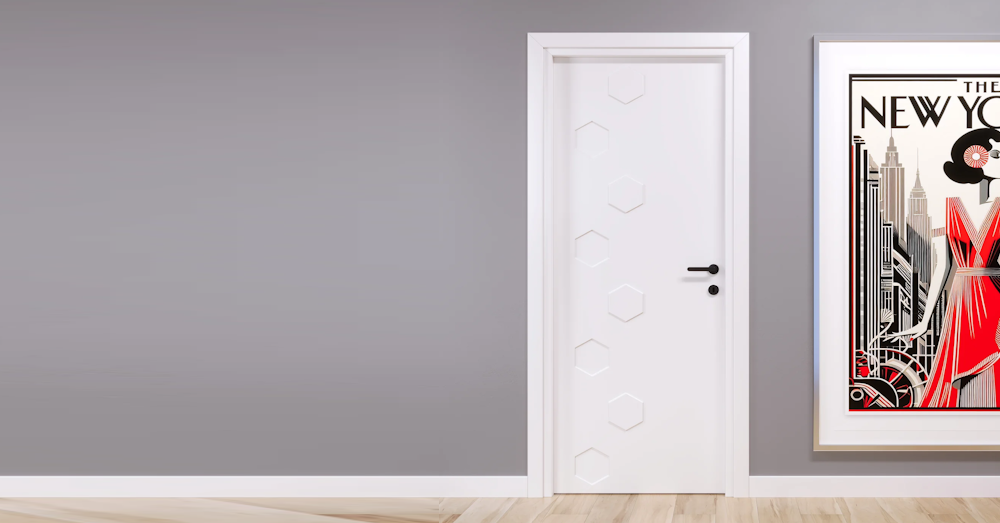In the world of interior design and home automation, the choice of doors is crucial not only for the functionality of spaces, but also for the aesthetics and customization of spaces. Among the various types available on the market, pantographed doors are poised to become the undisputed protagonists thanks to their refined design and versatility.
But what exactly are pantograph doors? What are the available models and the most effective alternatives? Let's find out together.
Pantographed doors: definition and distinctive features
Pantographed doors are furnishing elements characterized by panels decorated using the pantographing process, which involves engraving or milling geometric patterns, bas-reliefs, or artistic designs directly into wood or related materials. This type of process allows for surfaces with a unique, detailed, and customizable aesthetic that is difficult to replicate with other traditional techniques.
The absolute peculiarity of these doors is the combination of craftsmanship and technological innovation : the pantograph, a machine that performs precise and constant incisions, allows for the reproduction of complex and high-quality designs , while maintaining the solidity and functionality of the door itself.
The most popular pantographed door models
Classic pantographed doors
These doors are characterized by elegant lines and traditional decorations , highly appreciated in environments with vintage or neoclassical furnishings. Often made of solid wood, the engravings follow simple floral or geometric motifs, capable of enhancing any residential or office setting .
Modern pantographed doors
The evolution of design has given rise to models with minimalist, linear, or asymmetrical engravings , ideal for contemporary and open-plan spaces. The use of materials such as MDF or laminate also allows for greater color customization and superior wear resistance.
Pantographed glass doors
An alternative that combines transparency and decoration : the doors feature glass panels interspersed with pantographed sections. This solution is highly appreciated by those who want to optimally manage the level of light within the rooms.
Alternatives to pantographed doors: which to choose?
Despite their many advantages , pantographed doors aren't always the perfect solution for every need. Here are some alternatives you might consider:
· Hollow-core doors : cheaper and lighter, they are often chosen for interior spaces where soundproofing and simplicity are priorities. However, they may lack the aesthetic complexity of pantograph doors.
· Sliding doors : these can be made in different materials and finishes, with a structure that slides above the wall or inside it
· Tempered glass doors : for those looking for a bright and modern environment, these doors represent a solution that combines aesthetics and functionality.
Why choose pantographed doors in a home automation project?
Integrating pantographed doors into a home automation environment means combining aesthetics and technology . Thanks to the precision-crafted materials, these doors can accommodate sensors, automatic closures, and remote control systems without compromising their appearance. Furthermore, customizable designs allow for perfect harmony with the overall design of the smart home.
Choose your next doors with the experts at Porte Italiane
Choosing quality pantographed doors is not just a matter of style, but a functional and long-lasting investment . For this very reason, it's essential to rely on professionals with proven experience in the sector. Porte Italiane is the leading provider of excellence for those seeking custom-made pantographed doors, crafted with high-quality materials and cutting-edge technology, always guaranteeing maximum reliability and after-sales support .
For personalized consultations, detailed quotes, and dedicated assistance, don't hesitate to contact the experts at Porte Italiane by calling 0941 912335. We're ready to guarantee you the perfect balance of design, functionality, and cutting-edge home automation technologies.

